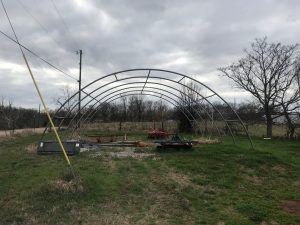Final Project Reflection
Karan Pol
BIOL 2103H
- In conjunction with many other students in the class, we went to Clarke Central High to work with the students the AP Environmental Sciences class on an extension of one of our own projects regarding bacterial growth in water and its resistance to various antibiotics, known as the PARE Project. In this project, we were testing for the number of colony forming units per gram of water.
- At the high school, along with a partner, I guided the AP students in looking at petri dishes that were showing incubated bacterial colonies and counting each that was present, so as to determine the number of colony forming units. This data was then transcribed online via an excel spreadsheet and the PARE website, much like our own data.
- The topic was regarding bacterial growth in waters and how the resistant the bacteria is to antibiotic. Using various dilutions and strengths of tetracycline, we tested the presence of colonies to determine bacterial resistance. This information was gathered directly through visual observation, knowledge of the antibiotic used in each petri dish, along with calculations that were both presented in the excel spreadsheet and in class. In presenting, I was able to more concretely understand the process as I was forced to communicate it.
- Three characteristics of effective information delivery.
- Intellectually stimulating: We made sure to explain the nature of the work we were doing and why it mattered in regards to viruses and the nature of antibiotic resistance
- Relevant to the audience: we discussed various diseases and in the spread of flu season and school beings hubs of disease, the project was highly relevant.
- Creative: It was difficult to incorporate this into the activity as the guidelines were rather strict -only a certain set of actions could be followed to complete the activity.
- Discoveries
- Two Discoveries Made:
- High schoolers are much less fun to be around in retrospect.
- High schoolers are louder and have shorter attention spans than I remember.
- I learned that I was not that great at leading a group of students that were only a few years younger than me. It shows the difficulty of the jobs TAs have.
- Two Discoveries Made:
- The audience, high schoolers, was extremely inattentive -at least my specific group was. They were more interested in talking to each other with little investment in the activity at hand. As such, in the future, it’s necessary to consider each audience’s preferences and interests and tailor a presentation to fit these. This can be seen in people using more videos in educating high schoolers where this may not be necessary in a past generation.
- I would spend more time establishing the importance of the project and going through the meaning of what was being done, also explaining in advance to us (the college students) what the instructions were for a smoother process.
- We had the benefit of basically redoing the assignment to cement the understanding of the process that goes behind determining bacterial resistance through this specific form of testing.
- While I will not be working in a related field, this presentation solidified the idea that practice makes perfect, as doing it with the high schoolers clarified any misunderstandings that I had.
- I don’t know that I came off as knowledgeable about the subject as I would have liked, considering I am by no means an expert. I would hope that we would go through some sort of briefing in class before going to the high school to ensure that everybody is on the same page.
- I feel that there wasn’t really a call to action or emotional argument made in the project that would force one to truly consider the dire situation of water quality globally. This is due to the scientific, unfeeling nature of data to the average consumer of information. Editorial is necessary.



